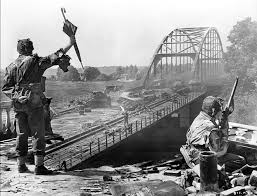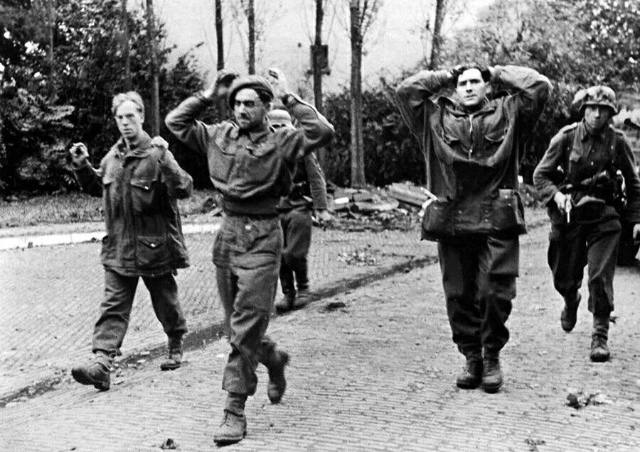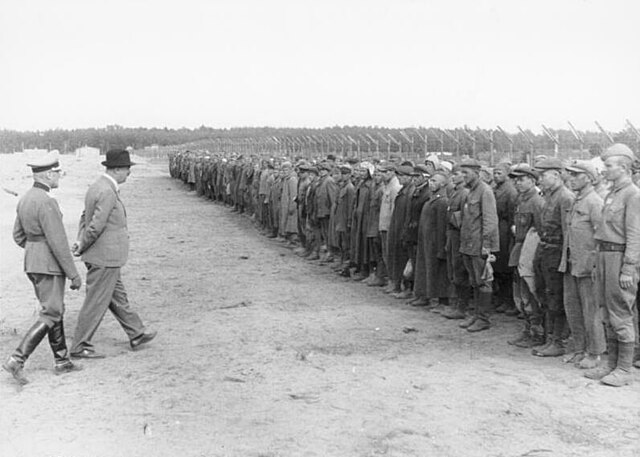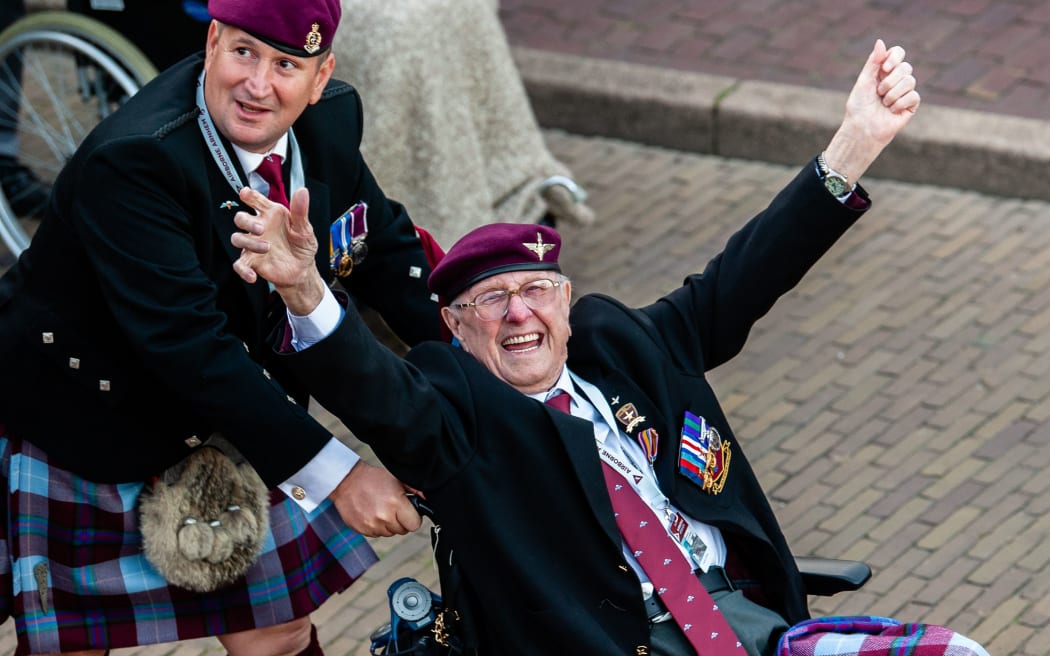Share this Story
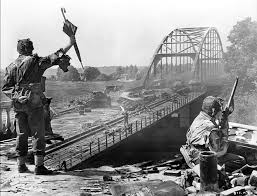
A Bridge too Far:
The Stand at Arnhem – The 3rd Battalion’s Heroic Defense
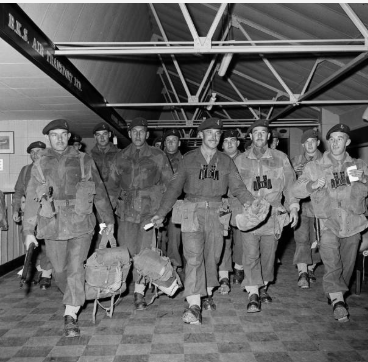
The story of Arnhem’s bridge is one of extraordinary courage, bitter determination, and unrelenting sacrifice. On September 17, 1944, Lt. Col. John Frost’s 3rd Battalion captured the northern end of the vital Arnhem road bridge. However, their triumph was short-lived. Isolated from the rest of the British 1st Airborne Division and cut off from reinforcements, Frost and his men were left to defend their precarious position against overwhelming odds. What followed was a desperate, four-day struggle that cemented their place in history as one of the most heroic stands of World War II.
Frost described the battle as “a test of endurance and willpower against the full might of the German war machine. Every man knew the situation was hopeless, but no one gave up.” The defense of Arnhem bridge became a story of resilience, a testament to the British paratroopers’ unwavering determination in the face of seemingly insurmountable odds.
The First Assault
On the morning of September 18, the Germans launched their first major attack on Frost’s position. Tanks from the 9th SS Panzer Division, supported by infantry, rumbled toward the bridge, their intent clear: dislodge the British and regain control of the vital crossing. Despite being heavily outgunned and outnumbered, Frost’s men held firm. Using improvised barricades and handheld anti-tank weapons, they turned the narrow streets surrounding the bridge into a deadly maze.
The noise was deafening—artillery shells screamed overhead, smashing into buildings with thunderous force, while German tanks growled across the cobblestones, their treads grinding through debris and rubble. Inside the makeshift strongholds, paratroopers braced for the worst, passing around their remaining PIAT rounds and sharing brief, quiet words of reassurance. Every corner they defended became a pressure point in the battle, where split-second decisions meant the difference between holding and falling.
As the first wave of German armour rolled in, British fire lit up the street. Anti-tank rounds slammed into the lead Panther, setting it ablaze, while infantrymen hurled grenades from upstairs windows onto advancing German squads. Smoke, dust, and screams filled the air as chaos descended. In the middle of it all, Lt. Jack Cowan, one of Frost’s junior officers, shouted orders above the din: “Hold the line! Not one step back!” His voice, hoarse from days without rest, became a rallying cry for those around him—ordinary men holding fast against overwhelming force.
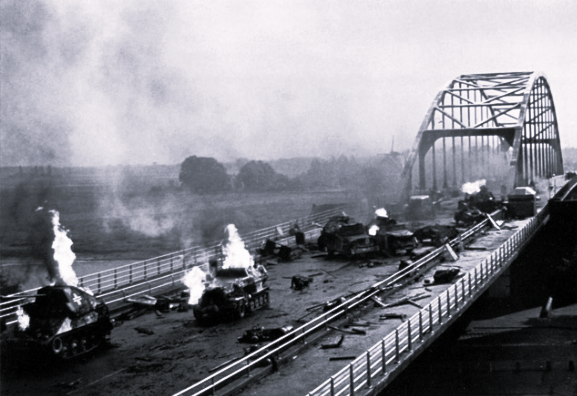
We were dropping into an area that was already occupied by the enemy. The drop itself was chaotic, but the real test was getting to our objective. We knew it was going to be hard from the sWe were firing PIATs [Projector, Infantry, Anti-Tank] at these bloody great tanks. It felt like throwing pebbles at an elephant, but sometimes it worked. We knocked out a couple, and that gave us hope.tart.
Sgt. Tom Hicks, 3rd Bn Parachute Regiment
The British were like shadows in the ruins—tenacious, unpredictable. They did not behave like men who knew they were beaten
Heinz Harmel, 10th SS Panzer Division
We knew we couldn’t hold forever, but we also knew that every hour we held the bridge was buying time for the rest of the operation to succeed.”
Capt. Tony Hibbert, 3rd Bn Parachute Regiment
Cut Off and Alone
As the battle raged, it became increasingly clear that 30 Corps, the armored column meant to relieve the airborne forces, was nowhere near Arnhem. German resistance and logistical chaos had slowed their advance. Frost’s battalion, isolated and with no functioning radios, was left to face the full brunt of the German counteroffensive alone.
Food and ammunition ran low. Paratrooper Dennis Armstrong recalled, “We shared a single tin of corned beef between eight lads. It wasn’t much, but we made it last. The lads joked that it was better than the rations back home.” A German corporal, whose diary was later recovered, wrote: “They were like cornered animals, but fearless. We took more losses than we ever expected. They made us fight for every stone.”
“We felt abandoned. We’d been told to hold the bridge until relieved, but day after day passed, and there was no sign of anyone coming.”
Private George Lauder, 3rd Bn Parachute Regiment
In the dead of night, the sound of boots shifting rubble or the low crack of a sniper’s rifle became constant reminders that danger never slept. Cold, exhausted, and cut off from the world, the men of the 3rd Battalion clung to the belief that help would come—even as hours turned to days. One soldier later recalled, “We stopped asking when they’d arrive. We just kept fighting, because stopping meant it was over.” In that silence, amid shattered buildings and whispered prayers, the battalion’s resolve only hardened.
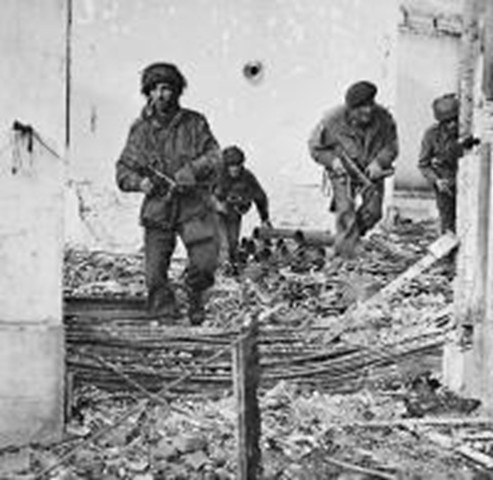
The Brutal Close Quarters Combat
By September 19, the battle descended into ferocious, close-quarters combat. German infantry stormed buildings while British paratroopers defended them room by room. Grenades, bayonets, and even fists became weapons of survival.
Pvt. William “Bill” Mills, who later spoke at remembrance services, described it as “a nightmare come to life. You could hear them coming—boots, German shouting—then it was chaos. You just fought until there was nothing left to fight with.”
German officer Kurt Lindemann, who later testified during British debriefings, said: “It bordered on madness—their refusal to surrender. They bled us dry. We gained ground, but we paid dearly for it.”
Windows shattered from the blast of grenades thrown through openings, followed by split-second bursts of gunfire as both sides fought for control of stairwells and hallways. The air was thick with smoke, plaster dust, and fear. In one house, paratroopers repurposed furniture as barricades, while others covered the doors with rifles at the ready. Corporal Fred Kennedy later recalled, “It was so close, I saw the whites of their eyes. We fought in the kitchens, on landings, in bedrooms. It wasn’t war—it was survival.”
A Heroic Stand, But at What Cost?
By the evening of September 20, the situation was critical. German forces had tightened their stranglehold around the British position, surrounding the remnants of the 3rd Battalion with tanks, artillery, and relentless infantry assaults. Smoke from burning buildings hung heavy in the air, choking the battered defenders as they scrambled between ruined cellars and shattered stairwells.
Fewer than 200 of the original 740 men remained able to fight—many of them wounded, running on empty, and clinging to sheer determination. Frost, hit by shrapnel, refused evacuation and continued issuing orders from a bloodstained mattress in the corner of a blown-out building. Even as ammunition ran dry and water supplies dwindled to a trickle, the men refused to surrender. They were bruised, bloodied, and bone-tired—but they were still British paratroopers, and the bridge was still theirs.
On September 21, Frost’s position finally fell. The survivors were captured. A Wehrmacht officer, unnamed but quoted in Allied intelligence, said: “They were broken in body, but not in spirit. We saw their courage, and we respected it.”
“We weren’t fighting for ourselves anymore—we were fighting for each other. No one wanted to be the one to give up.”
Sgt. Bill Shorthouse, 3rd Bn Parachute Regiment
Legacy of the Bridge
Of the 740 men who began the defense, fewer than 90 walked away unscathed. The rest were killed, wounded, or taken prisoner. Frost himself would later call it, “one of the proudest moments of my life.”
For Marecheal, who never spoke of the war, it was a memory buried deep—but carried always. His silence spoke volumes of the cost they paid.
The stand at Arnhem bridge may not have led to victory—but it remains a symbol of incredible defiance, brotherhood, and sacrifice. Their legacy, even now, continues to inspire.
Next in the Series: The Silence After the Storm – Marecheal’s Journey Through Stalag XI-B
Share this Story
From Arnhem to Captivity – the journey of Marecheal Niel & the 3rd Btn Paras
Share this Story A Bridge too Far: From Arnhem to Captivity – the journey of Marecheal Niel and the 3rd Btn Paras The Battle of Arnhem, part of the audacious Operation Market Garden, was one of the most significant engagements…
From Arnhem to Stalag XI-B – The Harrowing Journey of Capture, Captivity, and Liberation
Share this Story A Bridge too Far: From Arnhem to Stalag XI-B – The Harrowing Journey of Capture, Captivity, and Liberation The Battle of Arnhem had ended in chaos and defeat for the British 1st Airborne Division, but for the…
The Death March – Endurance in the Face of Collapse
Share this Story A Bridge too Far: The Death March – Endurance in the Face of Collapse For the men of the 3rd Battalion, survival didn’t end with the battle at Arnhem. Nor did it end behind the wire at…
After Arnhem – Memory, Silence, and the Stories We Carry
Share this Story A Bridge too Far: After Arnhem – Memory, Silence, and the Stories We Carry Commemoration service for the Battle of Arnhem. Photo Credit: AFP Not every battle ends when the shooting stops. Some battles carry on quietly for…
More Posts for Show: Urban Generations

